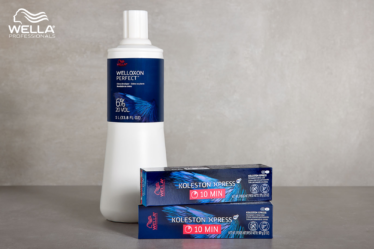
In the last weeks of 2023, when Nike released the long-awaited Kobe 6 Protro “Reverse” — better known as the “Reverse Grinch” — a familiar scene played out online. Some of those who missed out on the in-demand shoe took to social media to vent their frustration and blame bots for the loss.
“@Nike y’all got all this ‘bot protection’ but how only bots won the Reverse Grinch Kobe’s?” one shopper posted on X.
It’s assumed at this point that automated bots will infiltrate the launch of any sneaker that can be resold for a profit and make it difficult for regular shoppers to get them. The problem isn’t just limited to footwear. Bots are used to buy up everything from game consoles like the PlayStation 5 to limited-edition luxury goods. As retailers have come up with new methods to block them, bot developers have kept pace with ways to outsmart the defences. It’s led US lawmakers to propose outlawing bots and created an opening for technology providers such as EQL who promise better techniques to keep them out.
That might not seem like such an issue for the retailers themselves as long as they’re helping sell-through, but they can erode consumer trust. Lucy Rouse, vice president and general manager of Nike’s SNKRS app, said during a May 2023 press briefing at one of the company’s New York offices that Nike was making progress but could still do better against bots. SNKRS received 12 billion bot attempts per month, she said, and Nike had a success rate of up to 98 percent combating them.
But there’s another reason why people can’t always get the products they want, and it has nothing to do with technological competition: Brands prefer it that way.
Companies don’t usually share their release quantities, but one estimate floating around social media was that Nike put out somewhere in the vicinity of 300,000 pairs of the Reverse Grinch across its different drops, while the number of shoppers trying to get them was in the millions. The shoe came in as the fifth-most-wanted style of 2023 by US shoppers on SNKRS, according to a recap Nike posted on the app. Even if Nike filtered out every bot, that would still leave hordes of customers empty-handed.
There’s no reason to believe that’s an accident. For its high-demand launches, Nike gives careful consideration to how many pairs of shoes it releases.
“It’s probably the most debated question that we have as a team,” Phil McCartney, Nike’s global vice president of footwear, said in 2021.
The exclusivity of a product can be a powerful status signal, which is a key reason scarcity and desire have long gone hand in hand in fashion. Luxury brands and sneaker makers alike control their distribution to keep sales high without oversaturating any one market. Luca Solca, an analyst at investment firm Bernstein, has described it as selling “exclusivity by the million.” By leaving some demand unfulfilled in the short term, they’re better able to maintain it in the long-term.
Shoppers may complain about the low quantities available for hyped products, but they also continue to pursue them. Mike Sykes, who writes The Kicks You Wear, a newsletter on the sneaker business, said brands understand that releasing large volumes of their most sought-after styles and publicising the numbers available would likely dampen demand. While he said he believes it would be better for consumers if brands were more transparent and provided more information about the quantities available for any upcoming drop, he thought it was unlikely to happen.
“Everybody wants to chase the exclusivity,” he said.
Plenty of sneaker fanatics recognise the contradictions in how they behave. Even so, the situation has also led to growing frustration among consumers, who’ve grown tired of the challenges in getting the shoes they want.
“We’re in a place with sneakers now where really there is a very large demand on a shoe and not enough supply,” said sneakerhead Adham Abousalem. “I think people just like to blame something, so they blame bots in this scenario.”
Bots are undeniably a headache for both shoppers and brands. But they’re also part of an ecosystem designed to keep supply low and competition high, with or without help from technology.



